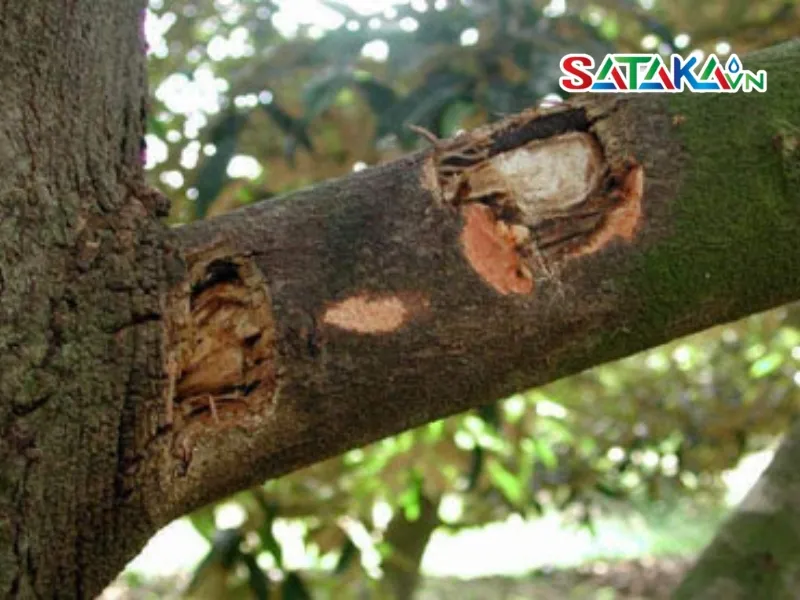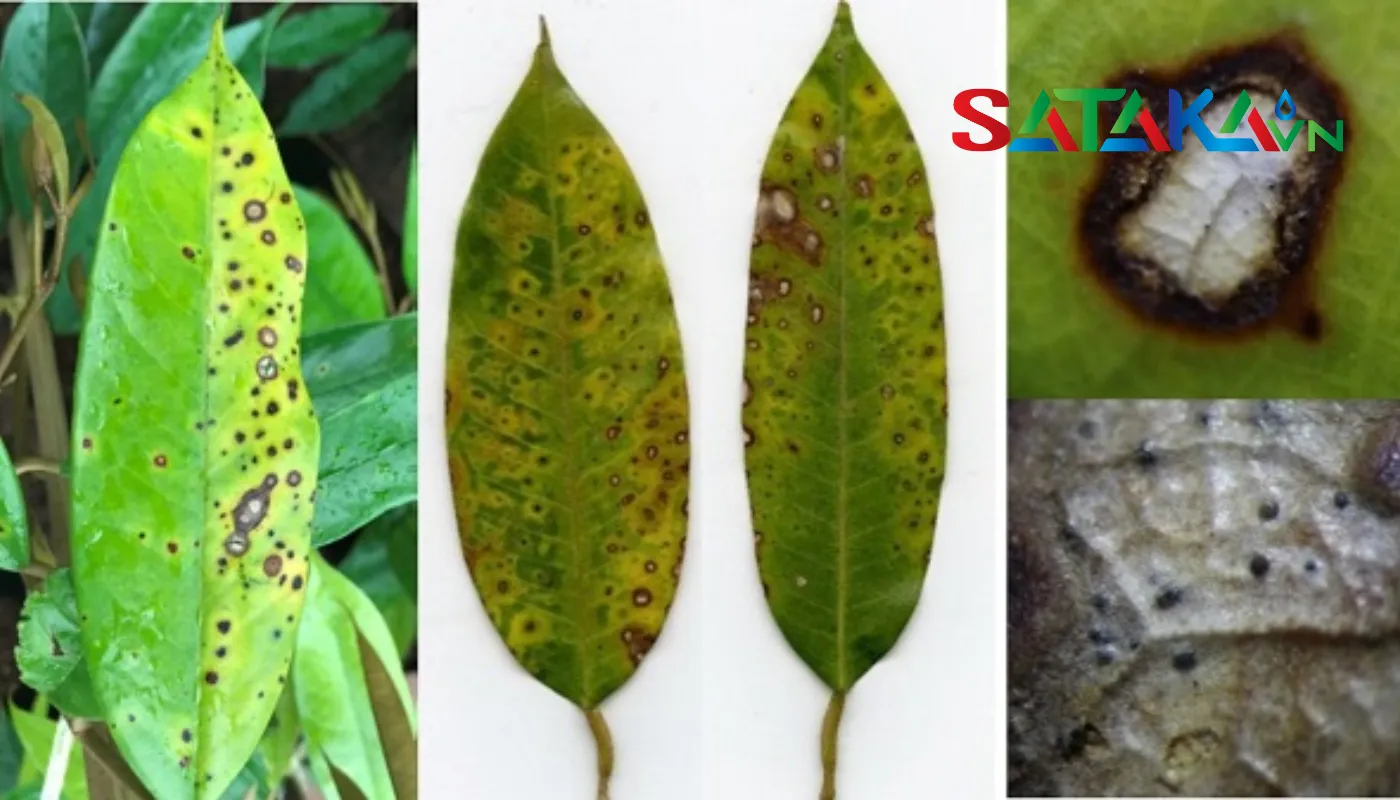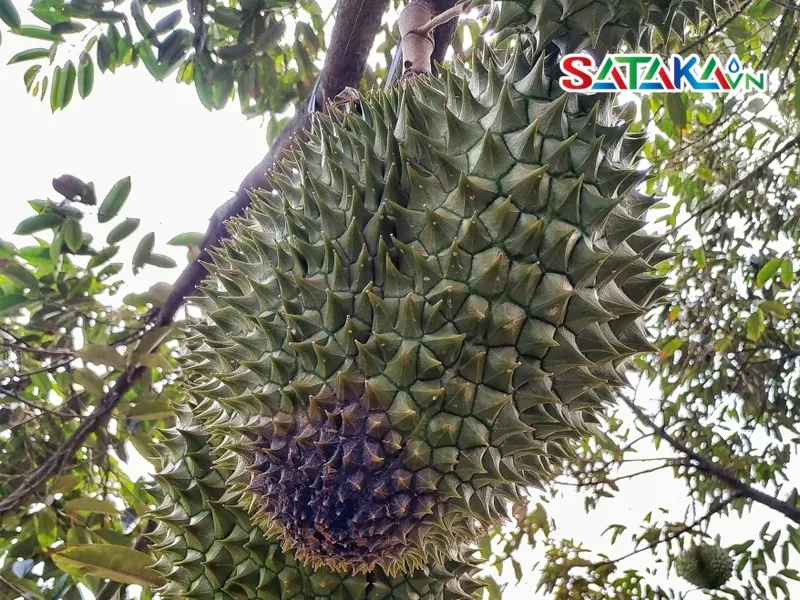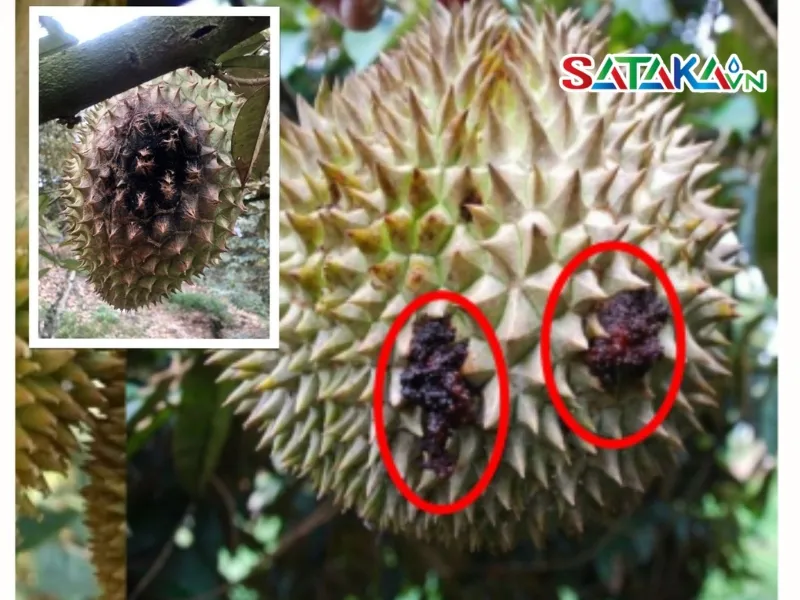Durian fruit rot is a common disease, causing serious harm to quality and yield, requiring growers to have effective prevention measures.
Fruit rot in durian is one of the most critical challenges many farmers face. The development of fungal pathogens not only reduces fruit quality but also significantly impacts yield and income. Understanding the causes, symptoms, and preventive measures is essential to protect your durian orchard. In this article, Sataka will provide detailed insights into the disease and effective solutions to prevent and control it.
Durian is a highly valued tropical fruit with significant economic potential. However, it is also susceptible to various diseases, with fruit rot being one of the most severe.
Fruit rot in durian is primarily caused by the fungus Phytophthora palmivora. This fungus attacks and destroys plant tissues, resulting in fruit decay and reduced yield. Other fungi, such as Colletotrichum gloeosporioides and Botryodiplodia theobromae, can also contribute to fruit rot.

Learn about durian fruit rot disease
Fruit rot develops rapidly in wet, rainy, and high-temperature conditions. Sudden weather changes create opportunities for fungal pathogens to thrive and attack durian trees. Improper tree care also fosters the onset of the disease.
When fruit rot affects the trunk, dark brown cracks and black sap exudations appear. These spots often emit a foul smell and spread quickly if untreated. Cracks usually occur near the tree's base or on main branches.

Fruit rot disease on tree trunks
Symptoms of fruit rot on leaves begin with brown or black spots, which gradually spread across the leaf. Infected leaves wither, drop prematurely, and hinder the tree’s photosynthesis process.

Leaves with black and brown spots indicate that the durian is sick
On durian fruit, fruit rot manifests as dark brown or black decayed patches, typically starting at the fruit's stem and spreading across the surface. Infected fruits become soft, emit a foul odor, and are unfit for consumption, severely affecting yield and product quality.

Fruit rot disease on fruit
Chemical control involves using plant protection products to prevent and eliminate fungal pathogens. At Sataka, we offer a range of high-quality products to safeguard your crops. Below are some of the recommended disease control products:
a. How does fruit rot impact durian yield?
Fruit rot causes decay in durian fruit, reducing quality and yield. If uncontrolled, the disease can spread widely and cause severe losses to the entire orchard.
b. Are there biological measures to prevent fruit rot in durian?
Yes, biological measures such as using antagonistic microorganisms like Trichoderma can help combat fungal pathogens. These microorganisms reduce fungal growth without harming the environment or human health.
c. When is the best time to spray fungicides for durian?
The best time to spray fungicides is early morning or late afternoon when temperatures are lower, and humidity is higher. Avoid spraying during intense sunlight or before and after rainfall to ensure maximum effectiveness.
d. Does Sataka offer advisory services for using fungicides?
Yes, Sataka provides product advisory services to help you select and use fungicides effectively. Contact us at 0856555585 or visit our website for detailed support.
e. How can I register for free consultations with Sataka?
To register for free consultations, visit our website and fill out the "Free Consultation Registration" form. Our team will contact you promptly to assist.

Some frequently asked questions about fruit rot in durian trees
Protecting durian trees from fruit rot not only boosts yield but also ensures high-quality products, enhancing economic returns for farmers. Applying proper cultivation practices and using high-quality fungicides, such as those from Sataka Vietnam, can effectively control and prevent the disease. For more information or advice, contact us via hotline: 0856555585. We are always ready to support and work with you to protect your crops.